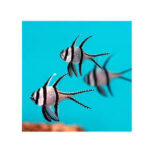Throughout Chinese history, dragons (龙, lóng) have been a powerful and enduring symbol deeply embedded in the country’s cultural heritage. From ancient myths to imperial dynasties, religious practices, and modern celebrations, the dragon has played a pivotal role in shaping Chinese identity. This mythical creature represents strength, wisdom, prosperity, and protection, and its presence can be traced across art, architecture, literature, folklore, and traditional customs.
In this article, we will explore the evolving role of dragons in China’s cultural heritage, examining their impact across different historical periods and their lasting influence on modern Chinese society.
I. The Origins of Dragons in Chinese Mythology and Early Civilization
1. Dragons in Ancient Chinese Mythology
The earliest depictions of dragons date back over 7,000 years, found in Neolithic jade carvings, pottery, and bronze artifacts. In Chinese mythology, dragons were revered as divine beings with supernatural abilities, often linked to creation, water, and cosmic forces.
- The Myth of Pangu (盘古开天辟地) – In one of China’s oldest creation myths, the primordial being Pangu is said to have formed the world, with dragons emerging as celestial creatures that balanced nature.
- The Dragon Totem Theory – Some scholars believe that ancient Chinese tribes, particularly those along the Yellow River, worshiped dragons as ancestral spirits. Over time, these tribal symbols merged into a unified cultural identity, reinforcing the idea that Chinese people are “descendants of the dragon” (龙的传人, lóng de chuánrén).
- Fuxi and Nuwa (伏羲与女娲) – These mythical figures, sometimes depicted with dragon-like tails, are believed to be the ancestors of humanity in Chinese legend. Their connection to dragons signifies wisdom, balance, and divine rule.
These early dragon myths laid the foundation for the creature’s significance in Chinese cultural heritage, shaping its role in later dynastic periods.
II. Dragons in Imperial China: Symbols of Power and Divine Rule
1. The Dragon as an Emblem of the Emperor
During China’s imperial era, the dragon became the exclusive symbol of the emperor, representing his divine right to rule. The emperor was often referred to as the “Son of Heaven” (天子, Tiānzǐ), and the dragon embodied his celestial authority.
- The Five-Clawed Dragon (五爪龙, Wǔzhǎo Lóng) – Only emperors could use this specific dragon motif in their robes, palaces, and official seals.
- The Dragon Throne (龙椅, Lóngyǐ) – The emperor’s seat of power was adorned with dragon motifs, emphasizing his supremacy over the nation.
- Imperial Dragon Robes (龙袍, Lóngpáo) – Worn by emperors and high-ranking officials, these robes featured intricate dragon embroidery, symbolizing wisdom, protection, and cosmic harmony.
The dragon’s association with the emperor was so strong that commoners were forbidden from using dragon imagery, further reinforcing the creature’s role as an emblem of royal power.
2. Dragon Motifs in Imperial Architecture
Chinese palaces, temples, and tombs from various dynasties prominently feature dragon imagery, reflecting their role in protection, prosperity, and celestial guidance.
- The Forbidden City (紫禁城, Zǐjìnchéng) – This grand imperial palace in Beijing is adorned with thousands of dragon carvings, from golden dragons on the rooftops to painted motifs on walls and ceilings.
- Dragon Pillars (龙柱, Lóngzhù) – Found in ancient temples and government buildings, these towering pillars depict dragons winding around them, symbolizing strength and divine authority.
- The Nine-Dragon Wall (九龙壁, Jiǔlóng Bì) – A famous architectural feature in imperial gardens and palaces, showcasing nine dynamic dragons in colorful glazed tiles, each representing different cosmic energies.
These architectural elements highlight how dragons were woven into China’s dynastic culture, reinforcing their spiritual and political significance.
III. Dragons in Chinese Religion and Folklore
1. Dragons in Daoism and Buddhism
Dragons play a crucial role in Daoist (道教, Dàojiào) and Buddhist (佛教, Fójiào) traditions, where they are often seen as celestial guardians, water deities, and symbols of spiritual enlightenment.
- The Four Dragon Kings (四海龙王, Sìhǎi Lóngwáng) – In Daoist mythology, these four dragon deities govern the seas and rain, ensuring balance in nature.
- Dragon Guardians in Buddhist Temples – Many Buddhist statues and temple gates feature dragons as protectors of sacred teachings, often depicted alongside Buddha or bodhisattvas.
- The White Dragon of Mount Emei – A famous Buddhist legend tells of a white dragon that guards Mount Emei, one of China’s most sacred Buddhist mountains.
Through these religious traditions, dragons became deeply ingrained in Chinese spiritual beliefs, representing both divine power and benevolence.
2. Dragons in Chinese Folk Tales and Festivals
Dragons are central to many Chinese folktales and traditional celebrations, reinforcing their cultural importance among the people.
- The Legend of the Yellow Emperor’s Dragon (黄帝御龙, Huángdì Yùlóng) – The mythical Yellow Emperor was said to ascend to heaven on a dragon, reinforcing the idea of dragons as celestial beings.
- The Dragon Boat Festival (端午节, Duānwǔ Jié) – Celebrated with dragon boat races, this festival honors Qu Yuan, an ancient poet, and symbolizes protection against evil spirits.
- The Fire Dragon Dance (火龙舞, Huǒlóng Wǔ) – A famous performance during Chinese New Year, where a dragon made of burning incense coils through the streets, driving away bad luck.
These folk traditions keep the legacy of dragons alive, connecting modern generations with their ancient past.
IV. Dragons in Modern Chinese Culture and Global Influence
1. Dragons as a National and Cultural Symbol
Even in contemporary China, the dragon remains a proud symbol of national identity. It appears in art, sports, and international events, representing China’s rich cultural heritage.
- The Dragon in Chinese Martial Arts – Many Kung Fu styles, such as Dragon Style (龙形拳, Lóngxíng Quán), incorporate movements that mimic a dragon’s fluid yet powerful attacks.
- Dragons in the Chinese Economy – The term “Chinese Dragon” (中国龙, Zhōngguó Lóng) is often used to describe China’s rapid economic rise, emphasizing strength and resilience.
- Dragon Imagery in Global Events – From the Beijing Olympics opening ceremony to cultural festivals worldwide, the dragon is a defining emblem of Chinese heritage.
2. The Dragon’s Influence on Asian and Global Cultures
China’s dragon traditions have influenced other East Asian cultures, including Japan, Korea, and Vietnam, where similar dragon myths exist. In the modern world, dragons are celebrated in Chinese communities worldwide, from Chinatown festivals to cultural exhibitions.
Conclusion: The Eternal Guardian of China’s Cultural Heritage
From ancient mythology to imperial rule, religion, folklore, and modern identity, dragons have played a vital role in shaping China’s cultural and historical legacy. Their connection to power, wisdom, protection, and prosperity has made them one of the most enduring symbols in Chinese civilization.
Even today, the dragon’s spirit continues to inspire generations, representing not only China’s glorious past but also its bright future as a global cultural and economic powerhouse.










